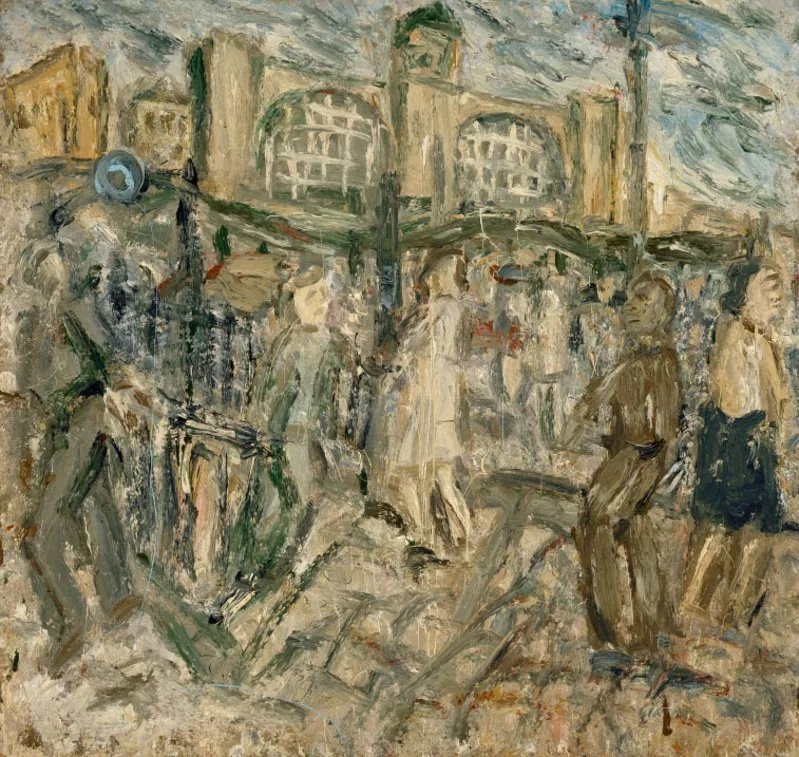The One About Desks
3 November 2022
A cluttered desk is a cluttered mind. From Georgian to Mid-Century, which era will boost your productivity?
Francesca Peacock
Francesca Peacock is an art, books, and culture writer.
Why is a raven like a writing desk? It’s a question the Mad Hatter asks Alice at the poor girl’s confusing tea-party, before remarking that it’s a riddle without an answer. He, and the March Hare and the Dormouse, can’t think of a single link between the bird and a desk.
It’s a question I found myself returning to this week, when exploring the endless possibilities of antique writing desks: from bureaus to elegant escritoires and sexy roll tops, surely one — just one — of them must have something in common with a raven.
When you’re writing your witty tweets, verbose Instagram captions, and heartfelt correspondence with one’s lovers (I find that quill and ink has a far higher success rate than a mere text message), how are you sitting? Are you typing from bed, the kitchen table, the loo — anywhere other than a desk?
Early 19th Century Regency Period Rosewood Davenport Desk
Available from Patrick Sandberg for £3,800
You see, the poor writing desk has rather gone the way of the typewriter, the chaise-longue, and the grandfather clock (as the Mad Hatter says, “If you knew Time as well as I do, you wouldn’t talk about wasting it. It’s him”). They’re thought to be elegant, antiquated, and beautiful — but fundamentally rather redundant and unnecessary in the modern world. Who needs a desk dedicated to writing letters like a Davenport with a slanted top — although, at the time of writing, Patrick Sandberg has a particularly fine rosewood example — when every email can be composed from an iPad?
Luckily for the poor old beleaguered writing desk, there are a few Luddites lingering in the world. Deep in the wilds of West London is The Old Cinema — a beautiful antiques shop housed in, as their name would suggest, an old picture house. I spoke to shop’s Will Hanness about the modern-day market for writing desks, and the picture he painted was not as bleak as a world of blandly-furnished We Works and (the worst of all modern inventions) standing desks might suggest.
Danish Midcentury Teak Desk by Gunnar Nielsen Tibergaard for Tibergaard c.1960, £3,995
The Chiswick-based shop gets about one desk in stock a week, with the examples normally ranging from beautiful Georgian bureaus with delicate drop-flap writing surfaces and countless cubby-holes and draws to stash your letters in, to mahogany turn-of-the century Carlton House desks — a style believed to have been designed in the 1790s for George V when he was still Prince of Wales. Sitting down at one of these — or a delicate French desk with curved legs — and the temptation to pretend you’re a Jane Austen heroine, a less-annoying Marie Antoinette, or a correspondent of Charlotte Brontë is undeniable.
But what if your writing desk inclinations are rather more modern, and you fancy trying your hand at some mid-century verse rather than a Regency diary entry? There are many brilliant 20th century desks on the market, from the Scandinavian cool of Gunnar Tibergaard Nielsen’s 1960s teak pieces — complete with stylish desk chairs — to more streamlined, metal designs from the Bauhaus school. Despite being more modern, these pieces are liable to set you back a fair amount more than my lusted-after Georgian bureau — a Nielsen desk and chair can reach £3000.
But my favourite 20th century works have to be those by the Hungarian artist and designer Mathieu Matégot: his desks are little more than bent pipes with a flat surface on the top, but their contortions — and those of his magazine racks, umbrella racks, and plant stands — brilliantly strain at the boundary between functionality and art.
After you’ve bought an antique writing desk, it will magically make you write a masterpiece — that’s how it works, right? It would seem to have been the case for all the writers whose desks are now for sale. Why else would someone in 2009 pay £20,000 at auction for Charlotte Brontë’s small, sloping mahogany desk, unless they thought it would help them pen their very own Villette? More recently, Samuel Taylor Coleridge’s “writing slope” — not even a full desk — sold for £6000 in 2015: a modern version of the Rime of the Ancient Mariner is surely about to be published any day now.
But, if you do buy an antique writing desk, I’ve got the subject for your masterpiece all planned out. After making time for your love letters, secret missives, and poetry, why not dedicate yourself to writing about why a raven is like a writing desk. C. S. Lewis’s explanation — “"Because it can produce a few notes, tho they are very flat; and it is never put with the wrong end in front! — has never satisfied anyone. A proper answer would surely be a book that everyone would read.
































